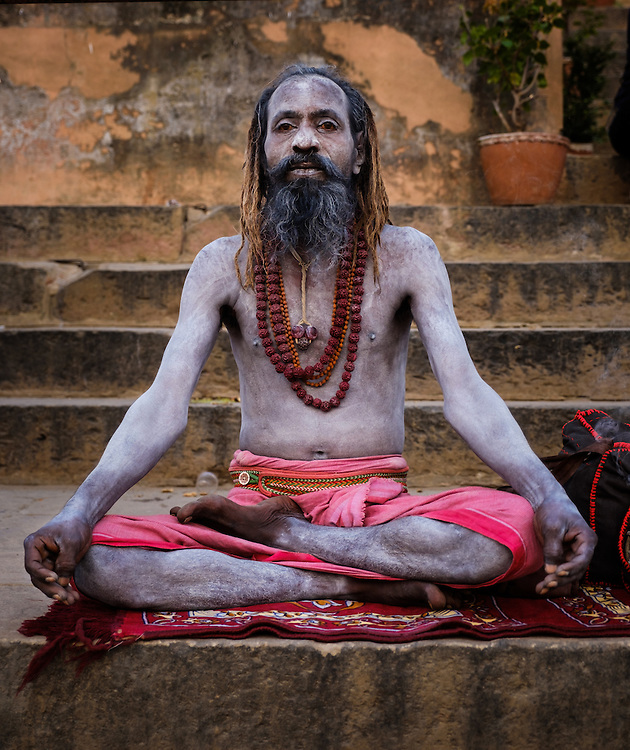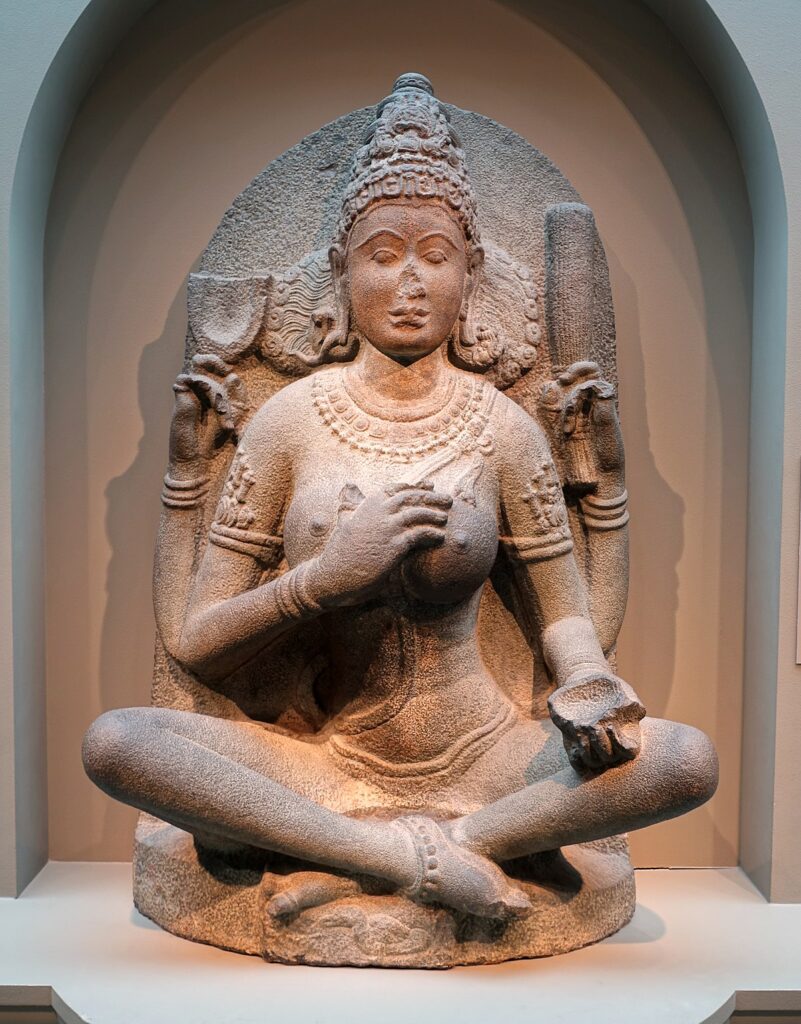Introduction – What Is the Role of Desire in Tantra? How To Master Desire by Practicing Tantra?
In the unknown or little-known landscape of Tantra, desire is not viewed as a hindrance to spiritual growth but rather as a powerful force that can be harnessed for transformative purposes. Unlike traditional spiritual paths that often advocate for the suppression of desires, Tantra takes a unique approach by recognizing desire as a natural aspect of human existence. This blog explores the multifaceted role of desire in Tantra, delving into how it can be a catalyst for spiritual evolution rather than a stumbling block.
Table of Contents
What Is the Role of Desire in Tantra?

The Science behind Desire in Tantra
Tantra acknowledges that desire is an inherent part of the human experience. Rather than labeling desires as inherently good or bad, Tantra invites practitioners to explore the subtleties of desire, recognizing it as a dynamic force that can either entangle or liberate the soul. The key lies in how one engages with and transmutes these desires on the spiritual journey.
Tantra Philosophy on Desire as a Path to Liberation
Tantra views desire as a pathway to spiritual liberation when approached with awareness and consciousness. Instead of suppressing desires, practitioners learn to navigate them, using the energy of desire to propel themselves towards higher states of consciousness.
Tantric Approach on Empowering Desire and Overcoming Fear
Tantra, in contrast, proposes a different approach—one that embraces desire rather than seeking to overcome it. The Tantric path involves cultivating the power to fulfill our desires while simultaneously being shielded from our fears.
This Tantric power isn’t a magical invocation through mantras; instead, it unfolds through rigorous spiritual sadhana, leading to the realization of our true, inherently powerful nature.
The Role of Desire in Tantric Sadhana

Contrary to the notion of desire as an obstacle to spiritual growth, Tantric sadhana views desire as the driving force behind the transformative journey. In Tantric practices, devotees unabashedly present their desires to Devi, seeking her assistance through mantras and pujas.
This engagement yields multifaceted outcomes—some desires manifest, deepening the devotee’s love for Devi. At times, desires remain unfulfilled, revealing themselves as superficial wishes concealing deeper, authentic desires.
As clarity emerges, these genuine desires find fulfillment, aligning with the devotee’s spiritual evolution. In cases where a desire is identified as counterfeit, protection from its manifestation becomes a blessing.
Tantric Revelation and Fulfillment of Desires
Simultaneously, Tantric rituals and mantras play a vital role in reinforcing the profound truth of one’s identity—the essence of Devi herself. The synergy of desire, sadhana, and the divine light of Devi unravels the illusory nature of desires, guiding devotees towards authentic fulfillment.
Desire Without Sadhana – The Cause of Suffering
Without the transformative practices of sadhana, desire becomes the root of all suffering. Individuals, bereft of the guiding light of Devi, navigate life blindly, attempting to satisfy desires while inadvertently causing harm to themselves and others.
Tantra’s Illumination of Desires
Tantra emerges as a guiding beacon, bringing desires out of the shadows and into the divine light. Through this process, Tantra fulfills authentic desires, aligning the purpose of life with the divine plan. In the Tantric journey, desires are not obstacles to be overcome; instead, they are keys unlocking the doors to bliss and self-realization.
How To Master Desire by Practicing Tantra?
Mastering desire in the realm of Tantra involves a holistic approach that embraces desire as a natural part of the human experience while channeling its energy towards spiritual growth. Here are steps to help you navigate desire and elevate your consciousness through Tantric practice:
Self-Awareness and Acceptance – Tantric Meditation
Begin your journey by practicing Tantric meditation techniques. Cultivate self-awareness and accept your desires without judgment. Understand that desires are a natural aspect of human existence.
Conscious Breathwork – Pranayama
Incorporate pranayama, or conscious breathwork, into your daily routine. Deep, rhythmic breathing helps you connect with the life force energy (prana) within and aligns your body and mind.
Tantric Rituals for Transmutation – Alchemical Practices
Engage in Tantric rituals designed for the conscious transmutation of desires. These rituals involve symbolic acts, mantras, and visualizations to redirect the energy of desire towards spiritual awakening.
Sensual Awareness Exercises – Mindful Sensuality
Practice mindful sensuality by engaging your senses fully. Whether enjoying a meal, feeling the warmth of sunlight, or savoring a fragrance, be present in the moment. This cultivates a deeper connection with your experiences.
Union of Polarities – Shiva-Shakti Meditation
Explore the concept of the union of opposites through Shiva-Shakti meditation. Visualize the dynamic dance of masculine and feminine energies within yourself, harmonizing the polarities of desire.
Detachment with Presence – Witness Consciousness
Develop a witness consciousness, observing your desires without attachment. Understand that desires are transient experiences and do not define your essence. This detachment brings freedom and inner peace.
Service and Compassion – Seva (Selfless Service)
Engage in acts of selfless service (seva) to redirect energy towards compassionate endeavors. By focusing on the well-being of others, you transcend personal desires and experience the joy of giving.
Mindful Consumption – Conscious Lifestyle Choices
Practice conscious choices in lifestyle, including diet and media consumption. Be mindful of what you expose your senses to, choosing elements that contribute positively to your spiritual journey.
The mastery of desire is an ongoing process, and Tantric practice provides a framework for continuous growth and self-discovery. Approach the journey with openness, compassion, and a commitment to spiritual fulfillment.
Frequently Asked Questions (FAQs) on the Role of Desire in Tantra
Q1: What is the Role of desire in Tantra?
A1: In Tantra, desire is not viewed negatively; instead, it is considered a natural and potent force that can be harnessed for spiritual growth. It serves as a catalyst for transformation and a means to connect with the divine.
Q2: How does Tantra differ from traditional spiritual paths regarding desire?
A2: Unlike traditional paths that often advocate for the suppression of desires, Tantra takes a unique approach by recognizing desire as a dynamic force. Tantra encourages practitioners to navigate desires consciously, transforming them into tools for spiritual evolution.
Q3: Can desire lead to spiritual liberation in Tantra?
A3: Yes, Tantra views desire as a potential path to spiritual liberation. When approached with awareness, desires can be transmuted into a transformative energy that propels individuals towards higher states of consciousness.
Q4: What role do Tantric rituals play in dealing with desires?
A4: Tantric rituals involve the intentional transmutation of desires. Rather than renouncing the world, practitioners learn to transform desires into devotional acts, elevating the mundane to the sacred and channeling desires for spiritual growth.
Q5: How does Tantra perceive sensuality in relation to desire?
A5: Tantra embraces sensuality as a means to connect with the divine. Conscious sensuality involves channeling desire into heightened awareness, transcending the limitations of the material world and using sensuous experiences for spiritual realization.
Q6: Is the union of opposites a key theme in Tantra?
A6: Yes, the union of opposites, symbolized by the union of Shiva and Shakti, is central to Tantric philosophy. Desire is seen as the cosmic dance of these polarities, and spiritual practices aim to harmonize and balance these energies.
Q7: How does Tantra approach pleasure in the context of desire?
A7: Tantra encourages mindful engagement with pleasure. Rather than rejecting pleasure, practitioners learn to approach pleasurable experiences with consciousness and gratitude, viewing them as opportunities to connect with the divine.
Q8: Does Tantra teach detachment from desires?
A8: Yes, Tantra teaches the art of cultivating detachment while engaging in desires. Practitioners learn to enjoy the experiences of life without becoming attached, fostering inner freedom and non-attachment.
Q9: Can desires be considered stepping stones in the spiritual journey according to Tantra?
A9: Absolutely. Tantra sees desires not as obstacles but as stepping stones towards spiritual realization. When approached with consciousness, desires become a dynamic and transformative energy that contributes to the sacred journey of life.
Q10: How can one practice Tantra to harmonize desires and spirituality?
A10: Practicing Tantra involves engaging in rituals, meditations, and conscious awareness. Seek guidance from experienced Tantra practitioners or gurus, and explore the various practices that help harmonize desires with spiritual growth.
Conclusion
In conclusion, the role of desire in Tantra is nuanced and profound. Far from being a force to be feared or suppressed, desire becomes a dynamic and transformative energy when approached with consciousness. Tantra offers a path where desires are not obstacles but stepping stones towards spiritual realization, union with the divine, and a celebration of the sacred journey of life.
References
- Hazra, Rajendra Chandra (1962). “The Puranas”. In Radhakrishnan, S. (ed.). The Cultural Heritage of India. Vol. 2. Calcutta: The Ramakrishna Mission Institute of Culture. ISBN 81-85843-03-1.
- Lochtefeld, James (2002). The Illustrated Encyclopedia of Hinduism, Vol. 1 & 2. Rosen Publishing. ISBN 978-0823931798.
- Pargiter, Frederick Eden (1904). Markandeya Purana. Calcutta: The Baptist Mission Press.
- Rigopoulos, Antonio (1998). Dattatreya: The Immortal Guru, Yogin, and Avatara: A Study of the Transformative and Inclusive Character of a Multi-faceted Hindu Deity. State University of New York Press. ISBN 978-0-7914-3696-7.
- Rinehart, Robin (2011). Debating the Dasam Granth. Oxford University Press. ISBN 978-0-19-984247-6.
- Rocher, Ludo (1986). The Purāṇas. Wiesbaden: Otto Harrassowitz Verlag. ISBN 3-447-02522-0.
- Sahasrabudhe, M.T. (1968). A Survey of the Pre-Śaṅkara Advaita Vedānta. University of Pune Press.
- Shastri, Pushpendra (1995). Introduction to the Puranas. New Delhi: Rashtriya Sanskrit Sansthan.
